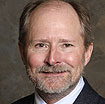Commentary on Ephesians 4:1-16
Not only does this text mark the halfway point of this epistle, it introduces the focus of the second half of the letter. Ephesians 1-3 stands as a celebratory reminder to the letter’s audience of their new, shared identity in and through Jesus Christ. Formerly, the audience had been Gentile aliens, therefore, they had not been members of God’s chosen, holy people. They were apart from Christ and thus had lived a hopeless, ungodly existence (Ephesians 2:11-12). Now, however, they have been immersed in God’s grace through Christ’s death and so are citizens and members of God’s household (2:13,19). They are part of the risen Christ in whom God is uniting the entire cosmos according to the mystery of God’s salvific plan (1:9-10; 2:6-7; 3:8-12). As participants in the Christ-established, new humanity (2:15-16), the letter’s recipients are also reminded that they are now members of the Church which is the Body with Christ as its head (1:22-23).
The crucial, introductory “therefore” in 4:1 serves as a pivotal appeal for the audience to manifest who God has called them to be (which is the core focus of Ephesians 4-6). Most English translations, however, misdirect the opening exhortation in 4:1 through wording such as living a “life worthy of the calling” (for example, NRSV, NIV). When we hear the word “worthy” it is not unusual for us to think in terms of “deserving,” as if we are to live in such a way that we deserve to be called by God.
The Greek word used in 4:1 is axios, an economically-based term describing how the two sides of a scale are to be in equilibrium. Thus, the appeal here is for Christian living to be in equilibrium with God’s call. Christians live out who God has already made them to be. Christian conduct not only flows out of the new reality created by God, Christian conduct puts into concrete action their new reality in Christ.
Throughout Ephesians, a hallmark of our new divinely wrought standing is unity. In 2:11-22 our God-established unity was imaged as the tearing down of the dividing wall which formerly had separated and segregated Gentiles (for example, the letter’s audience) from Israel. In the text at hand, this is the unity derived from and maintained by the Spirit. It is the unified divine condition of one body, one Lord, one Spirit, one God in which we have one hope, one faith, one baptism (4:4-6). Here in Ephesians this is more than just God-created unity. It is living in the total reality of God’s own self (thus the emphatic chain in verse 6 depicting God being “above all and through all and in all”).
The axiomatic Christian conduct (depicted in 4:2-3) which maintains and manifests this unified, divine “oneness” includes humility by which one does not think they are superior to other members of the one body. It involves relating to each other with patience and acceptance. It entails lifting each other up rather than tearing each other down; being cooperative rather than being competitive or combative. The divine origin of our call empowers such a divine vocation (God’s “calling,” verse 1). Our text understands this to be true spirituality. That is, it is the product of the one Spirit by which we demonstrate and sustain the unity of the one Spirit. Again, the reality of Christian unity enacts itself as, in, and through unified conduct.
Within this divine oneness, Christ graciously gives the gift of diversity (4:7-13). In this context, the gift of diversity is depicted as various positions of leadership within the body of Christ including apostles, prophets, evangelists, shepherds, and teachers (4:11). The focus and emphasis here are not on the functions of these positions (or offices). Rather, here in Ephesians the focus and emphasis of leadership diversity are both Christological and ecclesiological. These positions do not arise out of the contextual needs of the community. Rather, these leadership positions are graciously given by the descended and ascended Christ (note the emphatic repetition of Christ’s giving action in verse 7,8,11) for the proper functioning of the body of Christ (elsewhere in Ephesians described as “the Church,” 1:22-23; 3:10, 21; 5:23-32). Such proper functioning involves all the members of the body (for example, the saints, verse 12) being equipped for service in order to build up the community so that it would come to the full stature and unity of Christ (4:12-13).
Thus, in this text there is a tensive relationship between the unity of the community and the growth of the community. The community is a unified whole from the start because the community is the one body of Christ (4:4; so too in verses 12, 16a, 16b). At the same time, the community is not a stagnant entity. Rather, it is a living organism which grows into who it already is. Leadership positions are given by Christ to enhance the community’s growth into its full stature (or its full maturity) which is also a component of its Christian unity. Conversely, communal immaturity involves disunity and contentiousness caused through trickery and deceitful schemes of those who perpetuate false doctrines (4:14). Here in Ephesians 4 neither the identity of these tricksters nor the content of their false teachings is presented, though in 4:27 and 6:11-12 these are regarded as marks of the devil’s attacks against the community of Christ.
That which makes for the community’s true and full growth entails “speaking the truth in love” (4:15) within and among the members of the community. In 1:13, the “word of truth” was depicted as “the gospel of salvation” which includes both the announcement and the enactment of God’s saving work in Christ (1:7-14). To speak the truth in love entails a communal relationality which lives out of our original Christ-unified reality and grows into our full Christ-unified reality (4:15-16).
Ephesians 4:1-16 is very concerned with “church growth” but not really in terms of contemporary understandings of “church growth.” Its understanding of and focus on church growth is not focused on the quantity of congregations or its membership numbers. After all, the Church is one. Rather, church growth involves how the one Church and its multiple members are equipped by Christ to reflect the qualities of its unity and growth in love (note how “love” bookends the focus on growth in verse 15-16).


August 1, 2021